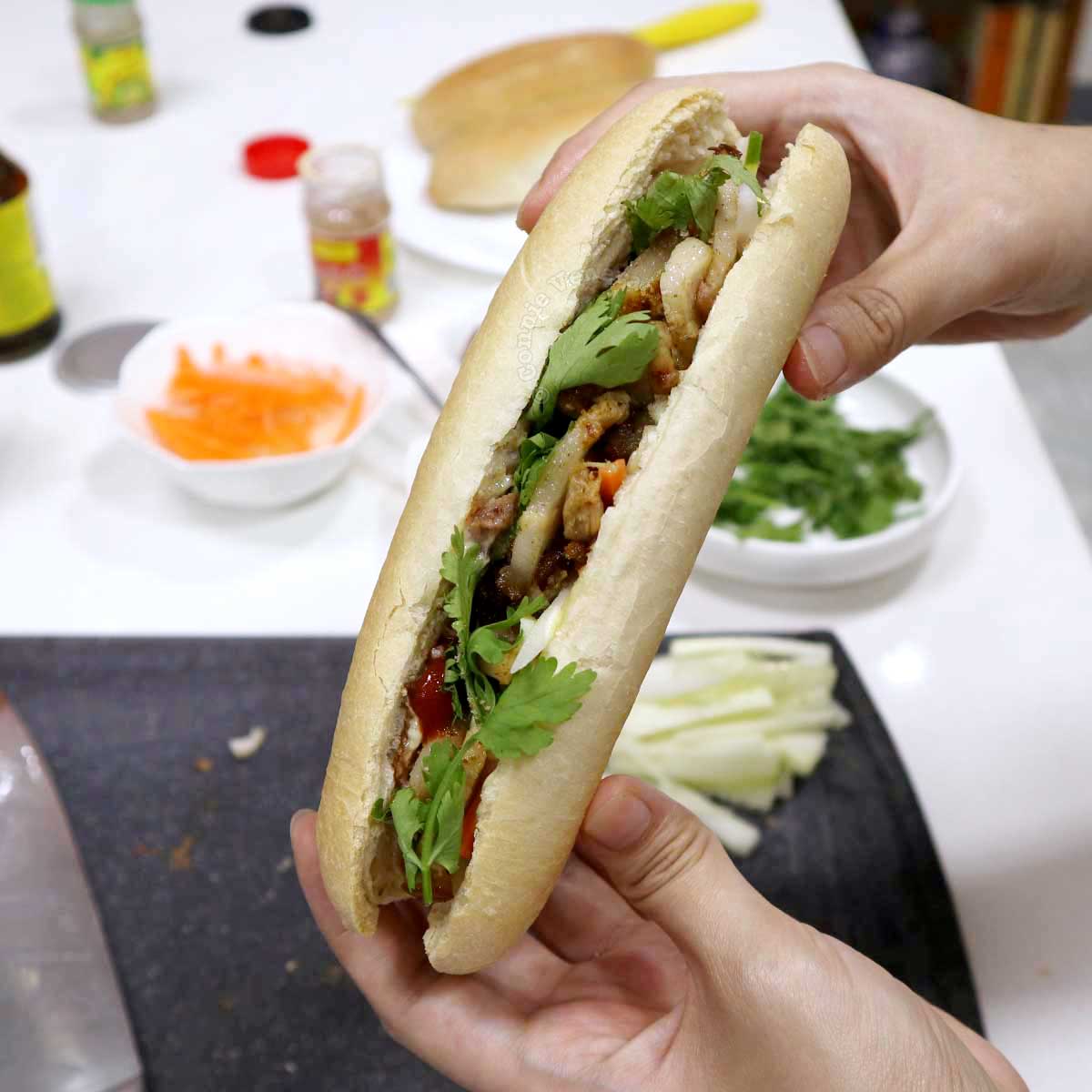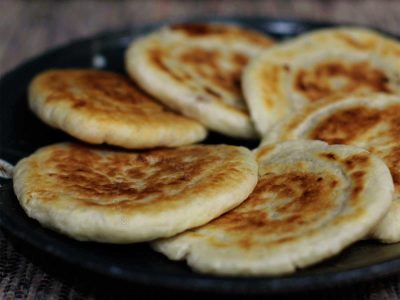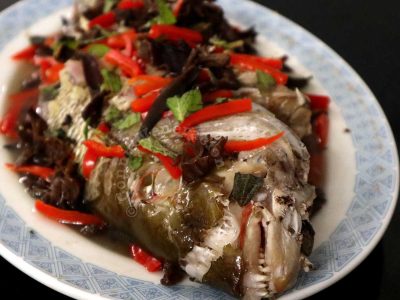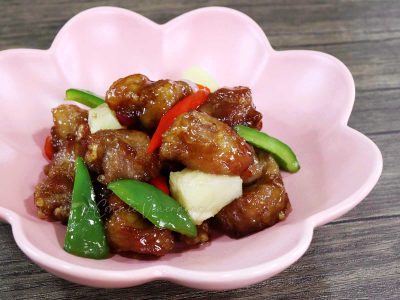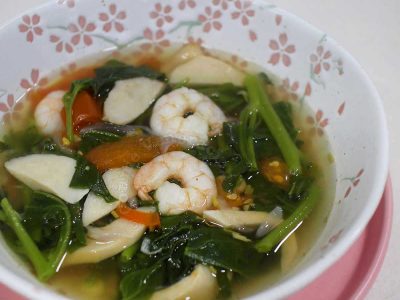The roast pork belly filling
Roast pork belly? Isn’t sliced cold meat the default banh mi filling? In Saigon, while we were enjoying our banh mi during the street food walking tour, Finn, our tour guide, remarked that back home in Soc Trang City on the Mekong Delta, banh mi filling was roast pork belly.
He said it in such a way that although he was talking to us, he was also talking to himself, quite dreamily, as though his heart and soul had momentarily left the streets of Saigon and had been transported back in time. I’ll never forget that moment. The tone of his voice, the look on his face…
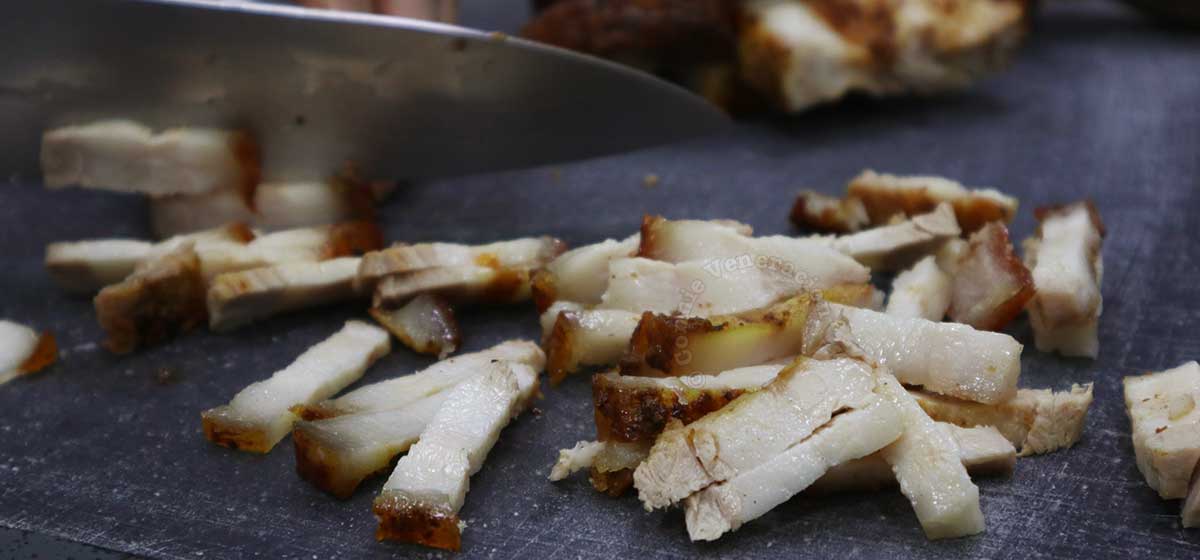
After finally deciding to document how we make banh mi at home, I deemed it proper to pay homage to that moment. This is banh mi with roast pork belly just like the way Finn described the banh mi in his home town on the Mekong Delta.
Vietnamese baguette
Vietnamese baguette is smaller than its French ancestor, for one. But it’s the texture that really sets it apart. The crust of the Vietnamese baguette is thinner and flakier. Press the bread between your fingers and the crust will easily crack in dozens of places.
The inside is softer and airier too that once you start piling on the filling, it gets pushed back into the crust as if to make space for all the things you want to put inside the bread.
And it is that characteristic, that capacity to make room, that makes it possible to put in so much filling into a Vietnamese baguette and still be able to press the top and bottom halves together with none of the filling falling off.
It isn’t easy finding baguette with these characteristics outside Vietnam. Just use ones that closely fit the description above and your banh mi will be fine.
The vegetables and condiments
Like the Saigonese banh mi that we love, the flavor base of our homemade banh mi consists of liver pate and mayonnaise.
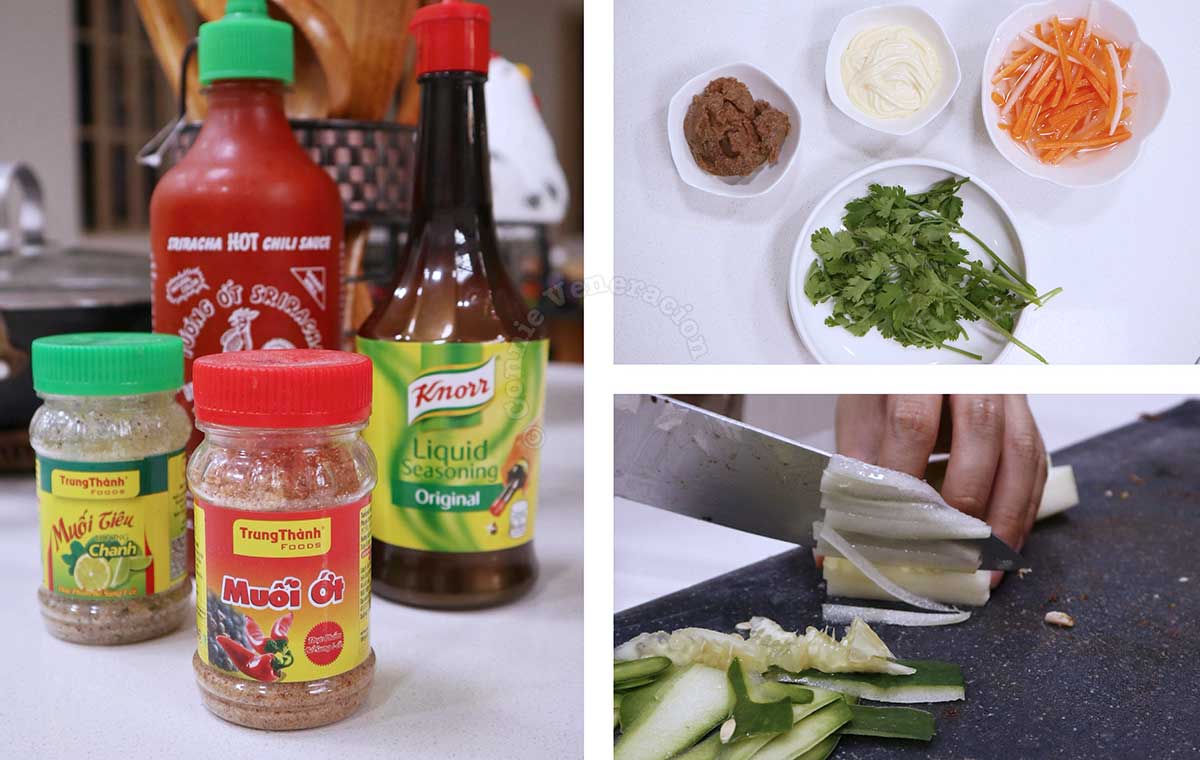
The vegetables are a combination of fresh and pickled. French cilantro and julienned cucumber, and pickled carrot and radish.
For the seasonings, we use four condiments. First, there are two mixed salt condiments that I bought in Hanoi — one with chilies and the other with lime — that are lightly sprinkled over the fillings. The mixed salts are followed by liquid seasoning (note that, in Vietnam, Maggi liquid seasoning is the default) and chili sauce.
How we assemble banh mi at home

The baguette is split open, one side is smothered with mayo and the opposite side with liver pate. The drained pickled carrot and radish, and julienned cucumber are spread on one side of the bread.
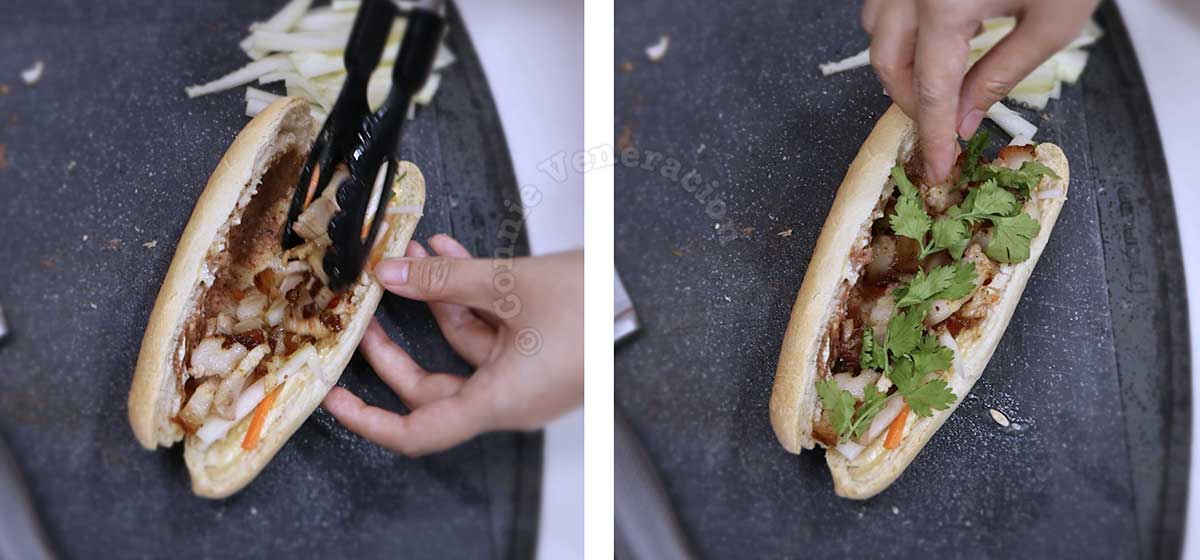
Next to go in is the roast pork belly. We like our meat so, yes, we put in a lot. The torn cilantro goes on top of the pork.
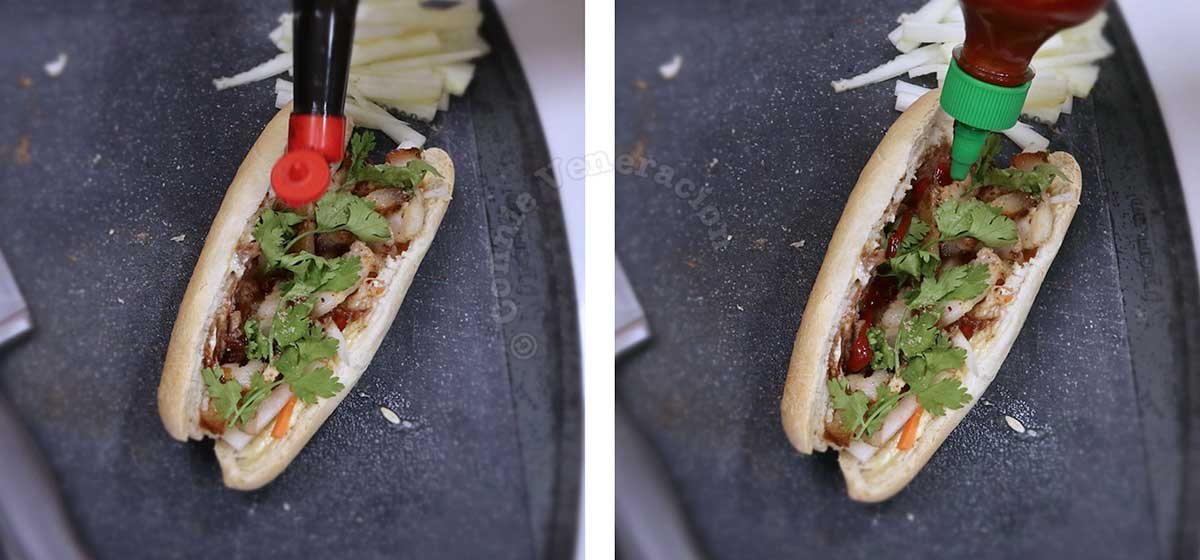
The mixed salts are sprinkled in and, finally, a drizzle of liquid seasoning and chili sauce.
Banh mi with crispy pork belly
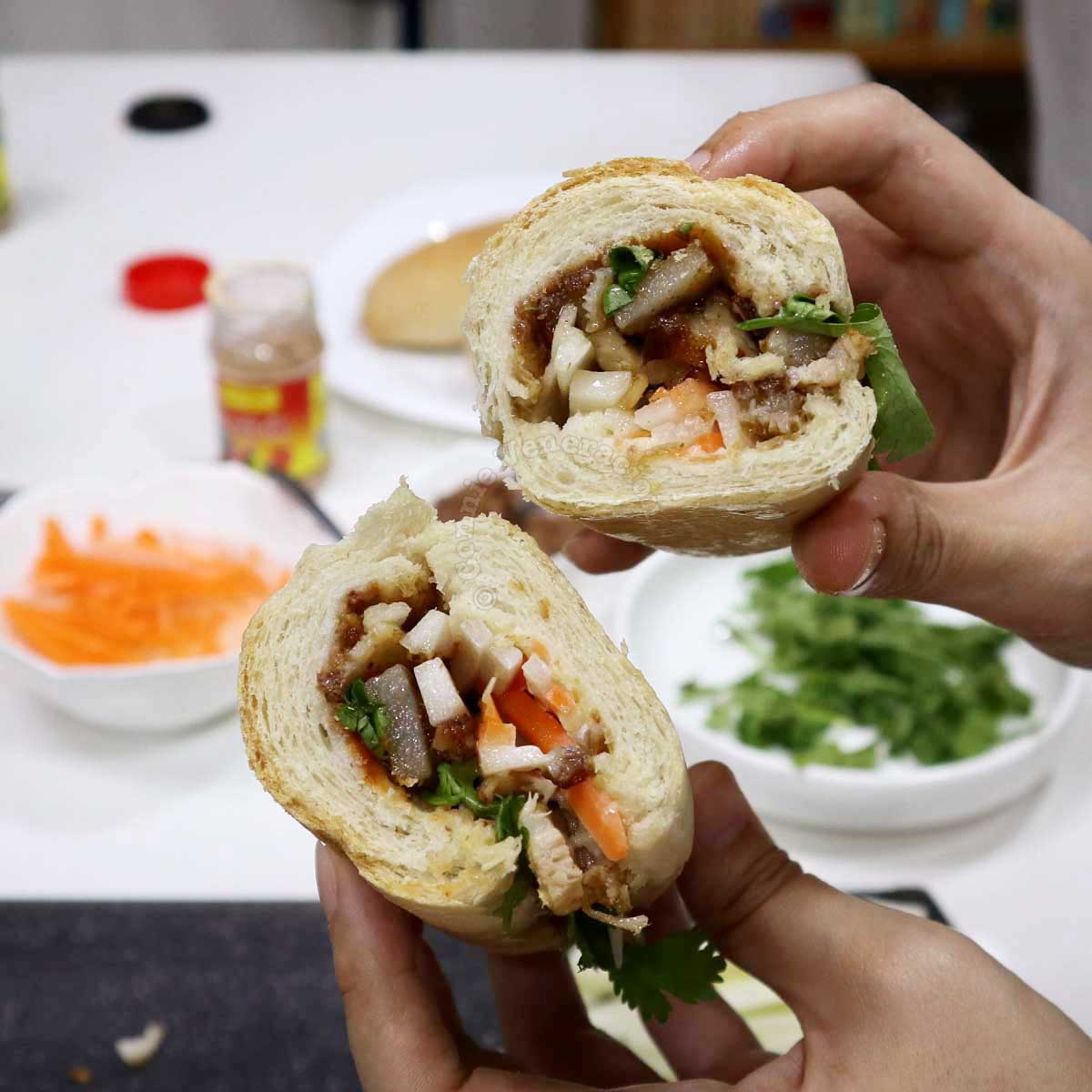
Ingredients
Pickled carrot and radish
- 1 medium carrot peeled and julienned
- 1 medium radish peeled and julienned
- ½ cup rice vinegar
- ¼ cup water
- ¼ cup white sugar
- 1 tablespoon rock salt
Bread and pork filling
- crispy pork belly sliced thinly then cut into strips
- 3 mini baguettes split to form a pocket
Fresh vegetables
- 1 small cucumber deseeded and julienned
- cilantro torn into small pieces
Seasonings
- mayo
- liver pate
- liquid seasoning we prefer Knorr over the traditional Maggi
- chili sauce we use Sriracha
- lime salt
- chili salt
Instructions
Pickle the carrot and radish
- Place the julienned carrot and radish in a jar with a screw-on lid.
- Add the rest of the ingredients and screw on the lid tightly.
- Shake the jar gently until the sugar and salt are fully dissolved.
Assemble the banh mi
- Spread mayo on one side of the baguettes.
- Spread liver pate on the opposite side.
- Spread drained pickled carrot and radish, and julienned cucumber on one side of the baguettes.
- Top the vegetables with crispy pork belly.
- Top the pork belly with cilantro.
- Drizzle in liquid seasoning and chili sauce.
- Sprinkle in lime salt and chili salt.
- Serve your banh mi with crispy pork belly.

